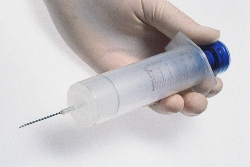Food chemistry
 Three kilograms of chemicals. This is the quantity that an average consumer consumes in the course of a year of the most different, sometimes absolutely familiar products: cupcakes, for example, or marmalade. Dyes, emulsifiers, seals, thickeners are now present in literally everything. Naturally, the question arises: why do manufacturers add them to food and how harmless are these substances?
Three kilograms of chemicals. This is the quantity that an average consumer consumes in the course of a year of the most different, sometimes absolutely familiar products: cupcakes, for example, or marmalade. Dyes, emulsifiers, seals, thickeners are now present in literally everything. Naturally, the question arises: why do manufacturers add them to food and how harmless are these substances?
Experts agreed to consider that “food additives are the common name of natural or synthetic chemicals added to food products in order to give them certain properties (improve taste and smell, increase nutritional value, prevent product damage, etc.) that are not used as a standalone food. ” The wording is quite clear and understandable. However, not all in this matter is simple. Much depends on the honesty and elementary honesty of manufacturers, on what and in what quantities they use to make products marketable.
The ordinal number of taste
Nutritional supplements are not the invention of our high-tech century. Salt, soda, spices are known to people from time immemorial. But the real flourishing of their use began all the same in the twentieth century – the century of food chemistry. High expectations were placed on supplements. And they met the expectations in full. With their help, we managed to create a large assortment of mouth-watering, long-lived and, at the same time, less labor-intensive products. Having won recognition, the “improvers” were put on stream. The sausages are pale pink, the yogurts are fresh-fruited, and the cupcakes are lush. “Youth” and the attractiveness of the products provided exactly the additives that are used as dyes, emulsifiers, thickeners, thickeners, gelling agents, enamels, flavor and smell enhancers, preservatives …
Their presence is obligatory indicated on the packaging in the list of ingredients and is indicated by the letter “E” (the initial letter in the word “Europe”). They should not be afraid of their presence, most of the names do not bear harm to health, the only exceptions are that in some people can cause individual intolerance.
Then the letter is followed by a number. It allows you to navigate the variety of additives, being, according to the Single European classification, the code of a particular substance. For example, E152 is completely harmless activated carbon, E1404 is starch, and E500 is soda.
The codes E100 – E182 designate dyes that enhance or restore the color of the product. The codes E200 – E299 are preservatives that increase the shelf life of products by protecting them from germs, fungi and bacteriophages. This group includes chemical sterilizing additives used in the maturation of wines, as well as disinfectants. E300 – E399 – antioxidants that protect foods from oxidation, for example, from rancidation of fats and discoloration of chopped vegetables and fruits. Е400 – Е499 – stabilizers, thickeners, emulsifiers, the purpose of which is to maintain the desired consistency of the product, as well as to increase its viscosity. E500 – E599 – pH regulators and anti-caking agents. Е600 – Е699 – flavors that enhance the taste and aroma of the product. Е900 – Е999 – anti-flaming (defoamers), Е1000 – Е1521 – all the rest, namely, glazers, dividers, sealants, flour and bread improvers, texturizers, packaging gases, sweeteners. There are no food additives under the numbers Е700 – Е899, these codes are reserved for new substances, the appearance of which is not far off.
The red dye is extracted using acetic acid. When mixing it with alkalis, salts, tartar and other acids, you can get dyes and other colors …
Mystery of the Crimson Kermes
The history of such food coloring as cochineal, also known as carmine (E120), resembles a detective novel. People learned to receive it in ancient times. Biblical legends mention a purple dye made from a red worm used by Noah’s descendants. Indeed, carmine was obtained from insect cochineals, also known as oak worms, or kermes. They lived in the Mediterranean countries, met in Poland and in Ukraine, but the Ararat cochineal received the greatest fame. Even in the III century, one of the Persian kings gave the Roman emperor Aurelian a woolen fabric dyed in crimson color, which became a landmark of the Capitol. Ararat cochineal is also mentioned in medieval Arabic chronicles, where it is said that Armenia produces “kirmiz” paint, used for dyeing downy and woolen items, writing book engravings. However, in the XVI century, a new type of cochineal appeared on the world market – the Mexican. Brought her from the New World to the famous conquistador Hernan Cortes as a gift to his king. The Mexican cochineal was smaller than the Ararat, but it bred five times a year, there was almost no fat in its thin bodies.




